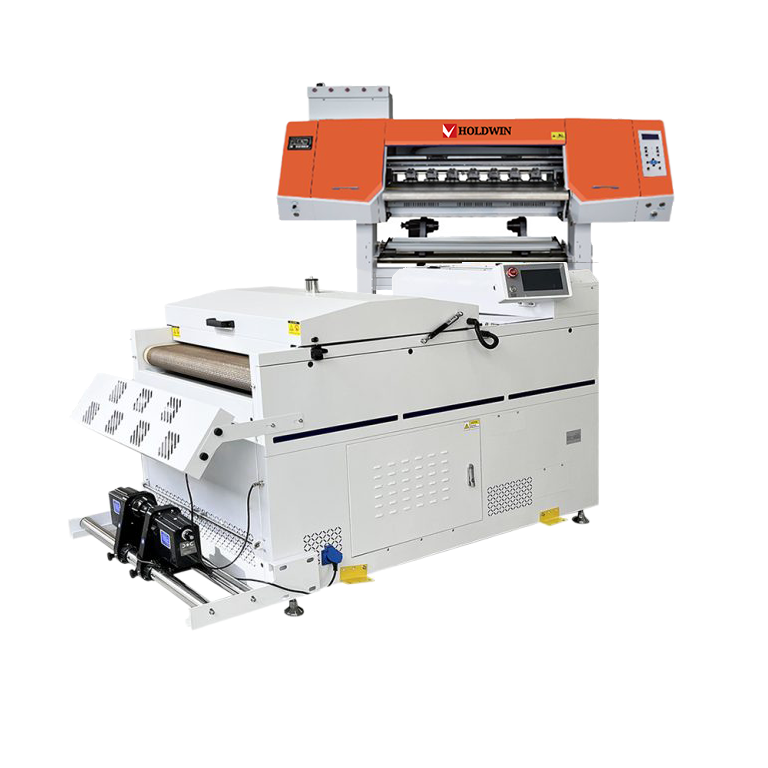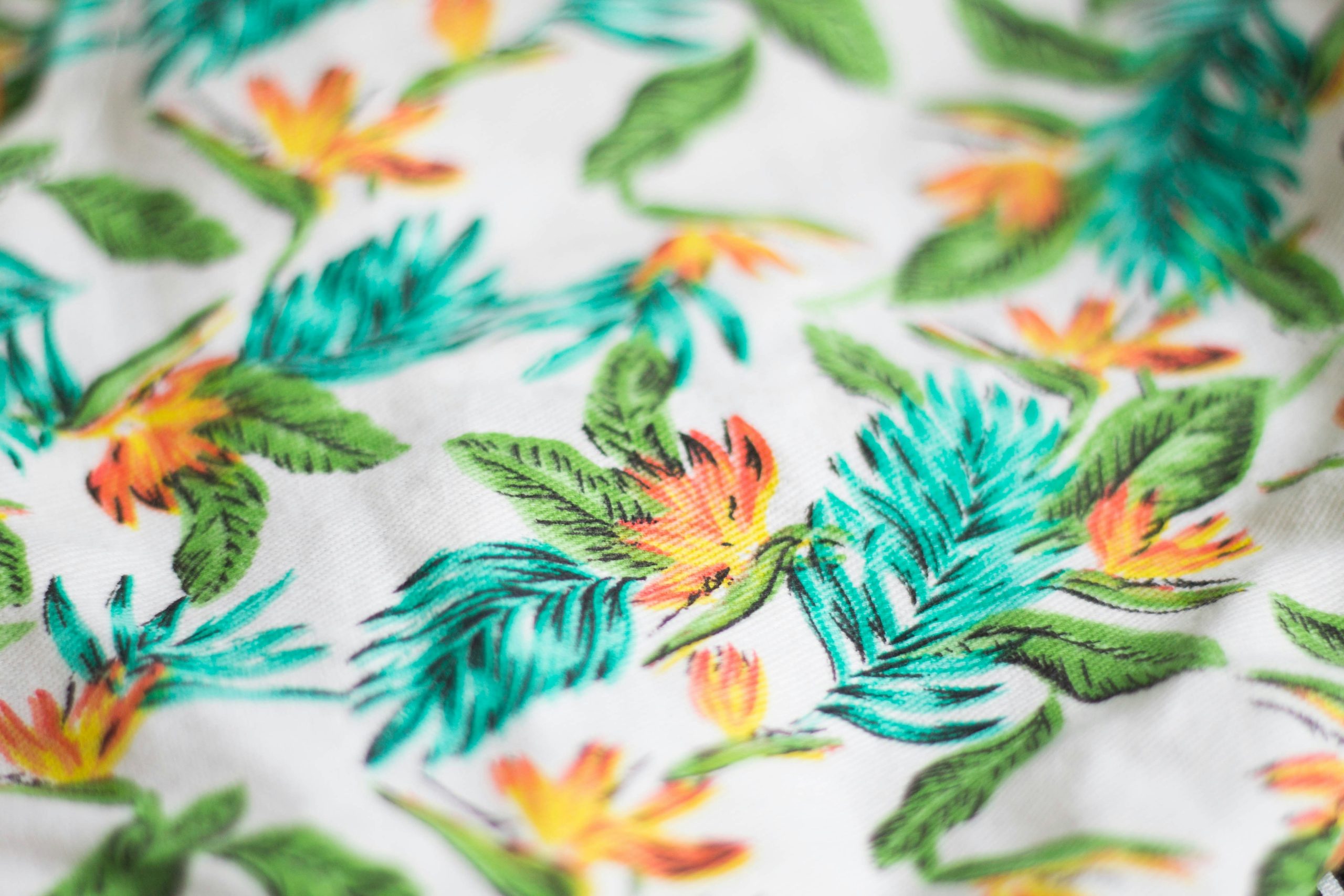
In recent years, the custom apparel market has seen an incredible transformation, driven by the increasing demand for personalized products and rapid advancements in printing technologies. Custom clothing, which once relied on traditional methods such as screen printing or embroidery, now benefits from the flexibility, precision, and efficiency of digital textile printing. This innovative technology has revolutionized the way fashion designers, textile manufacturers, and consumers approach personalized apparel, opening up new possibilities for creativity, sustainability, and business growth. At the forefront of this revolution is HOLDWIN, a leading player in the digital printing field, committed to providing cutting-edge solutions that meet the ever-evolving needs of the apparel industry.
One of the most significant advantages of digital textile printing is its ability to deliver high-resolution prints with exceptional color accuracy and detail. Unlike traditional methods, which often rely on physical screens or molds, digital printing uses advanced technology to apply designs directly onto fabric. This not only ensures precise color matching but also allows for the printing of complex patterns, gradients, and photographic images, all with remarkable clarity.
With digital printing, custom apparel manufacturers can offer clients a truly unique product. Whether it’s intricate logo designs for corporate wear or vibrant patterns for fashion collections, the possibilities are limitless. The ability to print on a variety of fabrics, including cotton, polyester, silk, and blends, further enhances the versatility of digital printing, allowing for an expanded range of custom apparel options.
Another key benefit of digital textile printing is the speed at which designs can be produced. Traditional methods such as screen printing require multiple setup steps, including creating screens, mixing inks, and preparing the fabric. In contrast, digital printing eliminates many of these time-consuming processes. Once the design is ready, it can be printed directly onto the fabric with minimal preparation, significantly reducing turnaround times.
For businesses in the custom apparel market, this translates to faster production cycles and the ability to handle smaller orders or on-demand printing more effectively. Whether it’s a single custom t-shirt for a special event or a batch of personalized uniforms for a corporate client, digital printing can accommodate various order sizes with ease.
Digital textile printing offers unparalleled flexibility in terms of customization. Unlike traditional printing methods, which often require large quantities to make production cost-effective, digital printing allows for print-on-demand services. This is particularly advantageous for small businesses and independent designers, as they can create unique pieces without the need for extensive inventory or large-scale production runs.
Moreover, digital printing enables customers to experiment with their designs and make adjustments in real-time. Fashion designers can create prototypes and adjust patterns, colors, or logos instantly, without the risk of wasting materials or time. This makes it easier to test new collections or offer a more personalized service to customers.

DTG printing has become one of the most popular methods for creating custom apparel due to its ability to print directly onto garments with high detail and color accuracy. This technology works similarly to an inkjet printer, where ink is applied directly onto the fabric’s surface. It is particularly suited for small-batch and on-demand printing, as it eliminates the need for screens or stencils.
DTG printing also offers the advantage of printing full-color designs without the need for additional setup or color separation, making it a cost-effective option for custom apparel. With the capability to print on various fabrics and produce designs with intricate details, DTG has emerged as a key player in the custom apparel industry.
Dye-sublimation printing is another popular method used for producing custom apparel, particularly for polyester-based fabrics. This technique involves turning solid dye into gas and allowing it to bond with the fabric, resulting in vibrant, long-lasting prints. The advantage of sublimation printing is its ability to produce designs with sharp lines, vibrant colors, and no loss of fabric breathability.
Sublimation printing is particularly well-suited for sportswear, activewear, and promotional apparel, where durability and color consistency are paramount. As the market for sports and casual wear continues to grow, sublimation printing’s popularity in the custom apparel industry is expected to rise.
Heat transfer printing involves transferring a design from a special transfer paper onto fabric using heat and pressure. While this method is commonly used for custom t-shirts and small batches, it offers benefits such as high-quality results and the ability to apply designs to a variety of fabrics.
Advancements in heat transfer technology have made it easier for businesses to create custom apparel on-demand, with designs that are both durable and high-quality. The flexibility and ease of use have made heat transfer printing a popular choice for many custom apparel companies.
As sustainability becomes a top priority for both consumers and businesses, digital textile printing offers a more eco-friendly solution compared to traditional printing methods. With digital printing, there is no need for excessive waste of ink, chemicals, or fabric, as the printing process is more precise and uses less material. Additionally, because digital printing is suited for small-batch production, it reduces the need for large inventories, minimizing waste and lowering the carbon footprint associated with overproduction.
In terms of cost, digital textile printing offers a competitive advantage for businesses in the custom apparel market. While the initial investment in digital printers may be higher compared to traditional methods, the savings in setup, materials, and labor costs can lead to greater long-term profitability. For small businesses or those looking to diversify their product offerings, the ability to print on-demand without the need for bulk orders can significantly reduce financial risk.
As digital textile printing continues to evolve, the future looks bright for the custom apparel market. With ongoing advancements in print quality, speed, and material compatibility, digital printing is expected to become even more versatile and efficient. In particular, innovations in color management, eco-friendly inks, and fabric compatibility will provide even greater opportunities for customization.
At HOLDWIN, we are committed to staying at the forefront of these advancements, providing our clients with the latest technologies to meet their custom apparel needs. As a company focused on creating innovative, high-quality digital printing solutions, we understand the importance of delivering products that not only meet industry standards but exceed customer expectations.
Our global vision is to become a world-renowned brand, offering personalized solutions that cater to the unique needs of our clients. Through continuous research and development, we are able to provide cutting-edge machines and technologies that enable businesses to offer exceptional custom apparel options to their customers.

“We’ve been using HOLDWIN’s digital printing machines for over a year now, and the results have been amazing. The quality and speed of production have far exceeded our expectations. We can now offer our customers unique, high-quality custom apparel that stands out in the market. The personalized service from HOLDWIN has also been fantastic—every solution is tailored to our specific needs. We’re excited to continue growing our business with them!” – Jane Doe, Owner of TrendyTees Custom Apparel
Digital textile printing is undeniably shaping the future of the custom apparel market. With its unmatched precision, speed, flexibility, and sustainability, it provides businesses with a powerful tool to meet the increasing demand for personalized, high-quality apparel. As this technology continues to advance, the possibilities for custom clothing are limitless, offering both established brands and startups a competitive edge in a crowded market.
At HOLDWIN, we are dedicated to helping our clients unlock the potential of digital textile printing, providing innovative solutions that are both efficient and sustainable. As the custom apparel market continues to grow, we remain committed to staying ahead of the curve, ensuring that our customers always have access to the latest and most advanced printing technologies.
References

Zhiyu is passionate about good products, good services, and good prices to let consumers know that choosing us is the right choice! For partners and end customers, we will provide one-on-one considerate smart services and provide you with more high-quality procurement solutions.